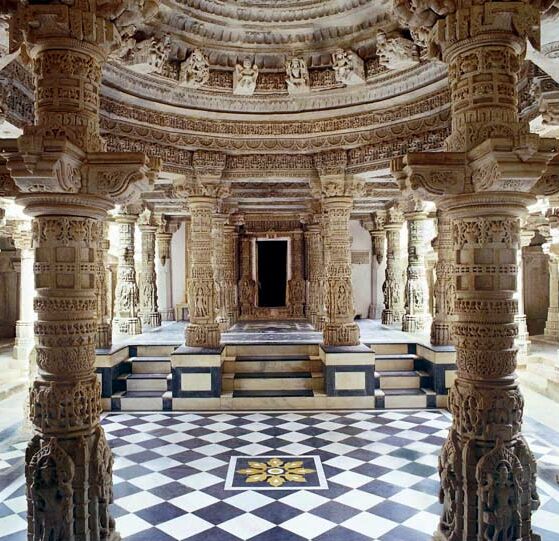|
Padmakshi Temple
Padmakshi Temple is one of the oldest temples in the Hanamakonda area of Telangana, India. It is dedicated to the Hindu goddess Padmakshi (Lakshmi), and also features Jain imagery. The site originally had a Shaivite cave temple, and a Jain shrine was established in 1117 CE, during the rule of the Kakatiya chief Prola II, who was himself a Shaivite. Some time later, the Jain shrine was replaced by a Hindu temple. The Jains attempted to regain control of the site in the 19th century, but a commission set up the Nizam of Hyderabad concluded that the site originally hosted a Hindu shrine. History The site originally had a Shaivite cave temple. The artificial caves, located to the west of the present-day temple, were probably carved before the 5th century CE, as they are almost identical to the early Brahmanical caves. A Jain shrine was probably added during the rule of the Chalukyas of Vatapi or the Rashtrakutas. A 1117 CE inscription found at the temple records the construct ... [...More Info...] [...Related Items...] OR: [Wikipedia] [Google] [Baidu] |
Telangana
Telangana is a States and union territories of India, state in India situated in the Southern India, south-central part of the Indian subcontinent on the high Deccan Plateau. It is the List of states and union territories of India by area, eleventh largest state by area and the List of states and union territories of India by population, twelfth most populated state in India, according to the 2011 Census of India, 2011 census. On 2 June 2014, the area was separated from the northwestern part of United Andhra Pradesh as the newly formed States and union territories of India, state of Telangana, with Hyderabad as its capital. Telugu language, Telugu, one of the classical languages of India, is the most widely spoken and the primary official language of Telangana state, whereas Urdu is recognised as the second official language. Additionally, several tribal languages such as Gondi, Kolami, Koya and Lambadi are spoken in different regions of the Telangana state. The economy of ... [...More Info...] [...Related Items...] OR: [Wikipedia] [Google] [Baidu] |
Basadi
A Jain temple, Derasar (Gujarati: દેરાસર) or Basadi (Kannada: ಬಸದಿ) is the place of worship for Jains, the followers of Jainism. Jain architecture is essentially restricted to temples and monasteries, and Jain buildings generally reflect the prevailing style of the place and time they were built. Jain temple architecture is generally close to Hindu temple architecture, and in ancient times Buddhist architecture. Normally the same builders and carvers worked for all religions, and regional and periodic styles are generally similar. For over 1,000 years, the basic layout of a Hindu or most Jain temples has consisted of a small garbhagriha or sanctuary for the main murti or idol, over which the high superstructure rises, then one or more larger mandapa halls. Māru-Gurjara architecture or the "Solanki style", is a particular temple style from Gujarat and Rajasthan (both regions with a strong Jain presence) that originated in both Hindu and Jain temples a ... [...More Info...] [...Related Items...] OR: [Wikipedia] [Google] [Baidu] |
Hindu Temples In Telangana
Hindus (; ; also known as Sanātanīs) are people who religiously adhere to Hinduism, also known by its endonym Sanātana Dharma.Jeffery D. Long (2007), A Vision for Hinduism, IB Tauris, , pp. 35–37 Historically, the term has also been used as a geographical, cultural, and later religious identifier for people living in the Indian subcontinent. It is assumed that the term ''"Hindu"'' traces back to Avestan scripture Vendidad which refers to land of seven rivers as Hapta Hendu which itself is a cognate to Sanskrit term ''Sapta Sindhuḥ''. (The term ''Sapta Sindhuḥ'' is mentioned in Rig Veda and refers to a North western Indian region of seven rivers and to India as a whole.) The Greek cognates of the same terms are "''Indus''" (for the river) and "''India''" (for the land of the river). Likewise the Hebrew cognate ''hōd-dū'' refers to India mentioned in Hebrew BibleEsther 1:1. The term "''Hindu''" also implied a geographic, ethnic or cultural identifier for people li ... [...More Info...] [...Related Items...] OR: [Wikipedia] [Google] [Baidu] |


